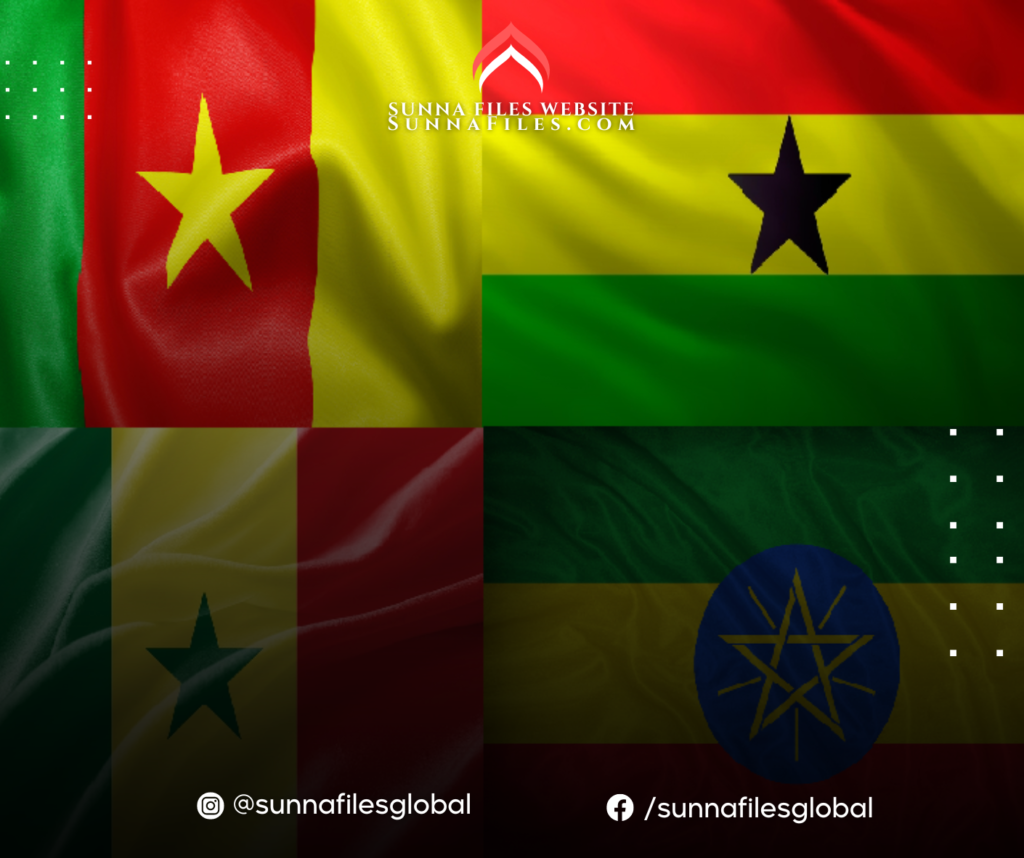When looking at the flags of African countries, there is often a noticeable similarity, especially those featuring the colours yellow, red, and green. Many of us find it challenging to identify which country a flag belongs to. However, this similarity is not coincidental but rather has its roots in the story of a country that managed to protect its territory from colonization in the late 19th century.
In this report, we will explore why African flags share similar colours, what their story is, which was the first country to incorporate these colours into its flag and how they spread to other nations.
African countries use the same colours In Africa
11 countries bear the colours red, yellow, and green in their flags. These countries are Senegal, Mali, Burkina Faso, Togo, Ethiopia, Guinea, Guinea-Bissau, Ghana, Congo-Brazzaville, Cameroon, and Benin.
These colours hold various meanings, originating from the flag of Ethiopia. Ethiopia drew inspiration for these three colours from the rainbow, mentioned in the Book of Genesis in the Bible as part of the story of God’s creation of the world.
In this context, yellow symbolizes hope, justice, and equality, while red signifies sacrifice for freedom and equality. The colour green reflects an understanding of work, development, and fertility.
Other African countries adopted these colours after gaining independence from European colonization, inspired by Ethiopia, the oldest independent African state. Ethiopia is known for these colours as symbols of African nationalism.
Why African flags share colours and the role of Ethiopia
The three colours found in the flags were first used in the Ethiopian Empire when Emperor Menelik II issued a decree adopting a flag consisting of red, yellow, and green in 1878.
According to Ethiopian tradition, the symbol of the lion was later added to the centre of the flag, representing Emperor Menelik I, the first emperor of Abyssinia, son of Queen Balkis and King Solomon.
The flag gained significant prominence after Ethiopia’s victory in the Battle of Adwa in 1896 against the Italian army, making it one of the rare African countries that resisted European control during the colonial period.

Ethiopians, led by Emperor Menelik II, relied on English weapons to confront the Italians, achieving a shocking victory and maintaining the independence of their country for many decades afterwards.
On October 11, 1897, after Ethiopia courageously defended its independence in the Battle of Adwa against Italian colonization, Emperor Menelik II decided to establish a flag symbolizing the identity of the empire. The flag consists of three rectangular colours from top to bottom: red, yellow, and green.
The initial of the emperor’s name was later placed on the central stripe of the flag, becoming a clear symbol of Ethiopian resistance against European colonization, especially after Italy’s defeat in 1896.
After this notable victory, Ethiopia became a significant symbol and an example for African countries that resisted colonization.
Symbolism and similarity of flags
The Ethiopian flag underwent various changes over the years with the evolution of the government system in Ethiopia, but the three colours remained constant. In March 1957, Ghana declared its independence, becoming the first country south of the Sahara to achieve this milestone. Kwame Nkrumah became the country’s president, advocating for African unity.
Under Nkrumah’s leadership, Ghana believed in the concept of Pan-Africanism, a global movement promoting solidarity among various groups in the African continent. This thinking was reflected in Ghana adopting a tricolour system in its flag, inspired by Ethiopia and honouring Ethiopia’s prominent role in resisting colonization.
Pan-Africanism is a global movement aiming to encourage and strengthen solidarity among all original and diasporic racial groups in Africa.
Nkrumah was strongly inspired by Ethiopia’s resistance to foreign occupation and decided to incorporate the tricolour system into Ghana’s flag as a way to honour Ethiopia as the only African state alongside Liberia that was never colonized.
They used the Ethiopian flag, which at that time had a green stripe at the top instead of red, and reversed it, placing a black star with five points in the centre of the flag.
African countries following Ghana’s path
Guinea adopted the same idea after gaining independence in 1958, but this time, they went for a vertical tricolour system. Mali’s flag is similar to Guinea’s but with green at the beginning and red in the last stripe.
Cameroon’s flag is similar to Mali’s, containing red in the middle stripe with a yellow star and a yellow stripe at the end. Senegal’s flag is similar to Mali’s but with a green star in the middle.
Other African countries that used these colours in their flags include Togo, Comoros, Burkina Faso, Seychelles, Guinea-Bissau, Sao Tome and Principe, Congo, Mozambique, Zimbabwe, Mauritania, Benin, and many others.
These three colours, along with black added later, are later known as the Pan-African colours
While the meanings of individual colours used in the flags may vary from country to country, countries using the Pan-African colours share similar meanings. The green colour represents the unique nature of the continent and the quality of the land for agriculture. The red colour symbolizes blood and the shared heritage of Africans during their struggle against colonization. The yellow colour represents Africa’s wealth, and finally, the black colour signifies the people.
However, there is another change to the Pan-African colour system made by Marcus Garvey, the founder of the Universal Negro Improvement Association (UNIA), born in Jamaica, using only red, green, and black. Countries like Malawi, Kenya, and the former Biafra drew inspiration from this colour combination. Nevertheless, these flags share the same meanings as those inspired by Ethiopia.
Sunna Files Free Newsletter - اشترك في جريدتنا المجانية
Stay updated with our latest reports, news, designs, and more by subscribing to our newsletter! Delivered straight to your inbox twice a month, our newsletter keeps you in the loop with the most important updates from our website












